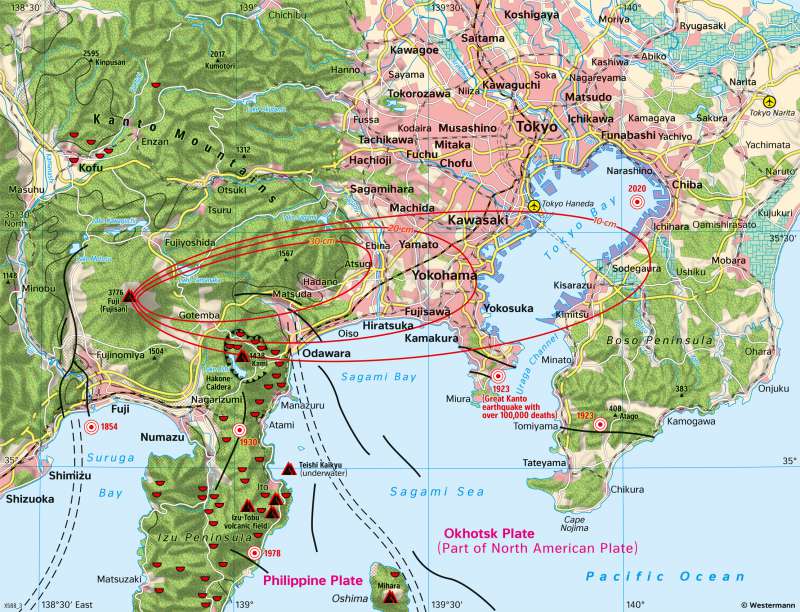Tokyo (Japan) - Vulnerable city at the foot of Mount Fuji
Population and settlements
978-3-14-100890-6 | Page 133 | Ill. 2

Overview
Tokyo is the largest urban agglomeration in the world. The city with its 23 boroughs has over 9.2 million inhabitants, and 37.5 million people live in the entire metropolitan region. Tokyo is the political, economic, and cultural centre of Japan.
Population growth was initially extraordinarily dynamic in the course of Japan's economic rise after 1945. From the mid-1970s it was less rapid, but still impressive. Currently, the population in the metropolitan region continues to increase, mainly through immigration, while in the city of Tokyo it is only slightly above the 1960 level.
The population growth is reflected in the strong growth of built-up areas, which since 1950 have expanded in a ring around the city centre, along the transport routes and the coasts. The growth is now increasingly dominant in the more distant outer areas, where population density - in large-scale terms - is declining centrifugally. A well-connected transport system allows commuting. For the population of the surrounding areas, the attractiveness of their residential location is primarily measured by the rapid accessibility of the city centres.
Earthquake and other natural hazards
Since the first earthquake records in 1602, Tokyo has been regularly hit by severe earthquakes. The Kanto earthquake (magnitude 7.9) on 1 September 1923 claimed around 150,000 lives. It destroyed the port city of Yokohama and large parts of Tokyo, especially west of the Imperial Palace. Because entire districts still consisted of traditional wooden houses, countless buildings were destroyed in the subsequent major fires. Even brick buildings could not withstand the shock. In total, about 700,000 houses were destroyed.
Other natural hazards that threaten the Tokyo agglomeration are typhoons, tsunamis, and volcanic eruptions because there are several active volcanoes in the immediate vicinity. Mount Fuji (Fujisan), located in the west, is now considered relatively calm. During its last eruption in 1707, which lasted two weeks, large parts of the Kanto plain, where the Japanese capital is located, were covered by a fertile layer of ash.
Since the Kanto earthquake in 1923, concrete construction has increasingly found its way into Japanese architecture. In the course of reconstruction, wider streets, new bridges and a fireproof infrastructure of hospitals, schools and other public facilities were built. Today, the city centre is dominated by structurally safe and fire-protected high-rise buildings. Other parts of the city, however, are still highly vulnerable to earthquakes.




